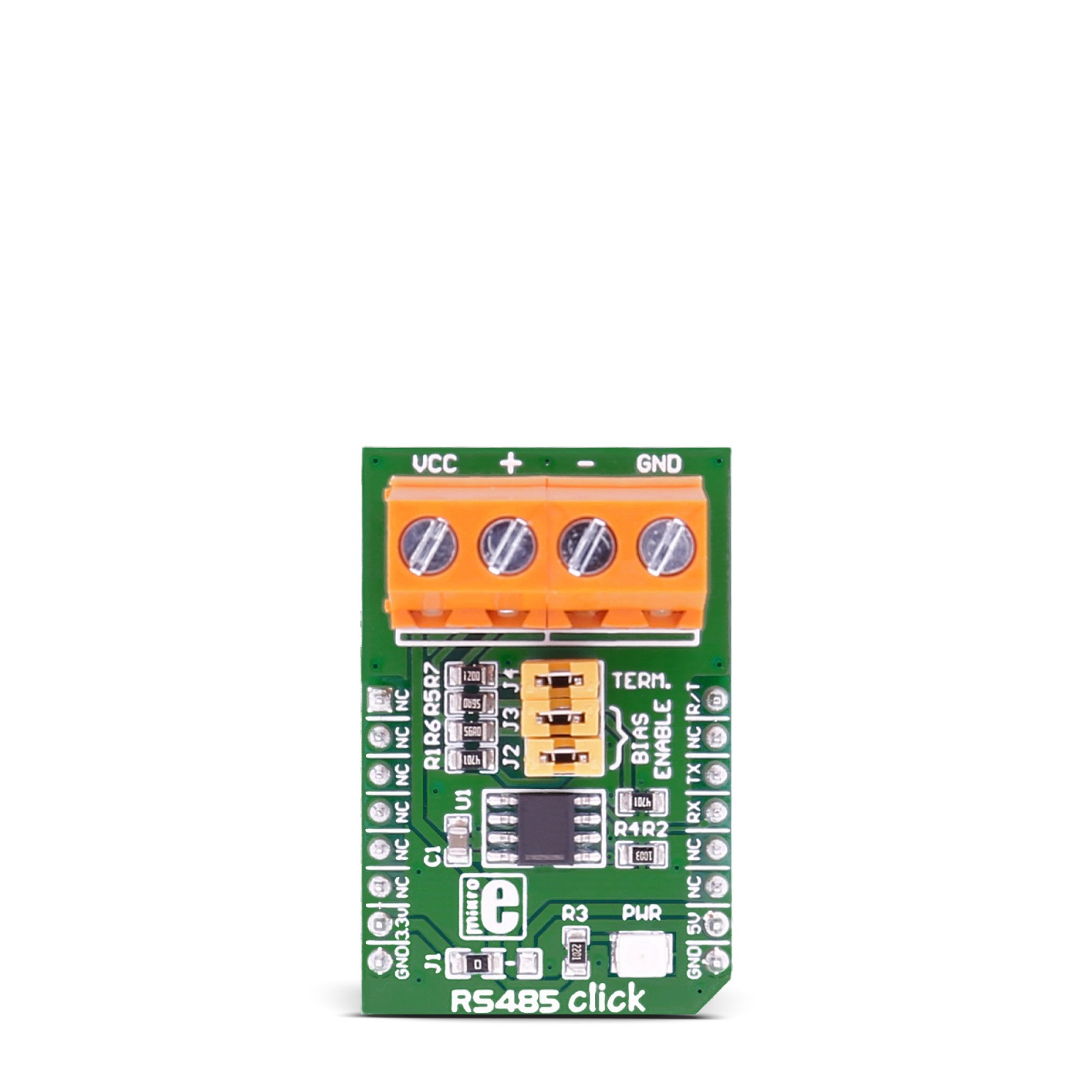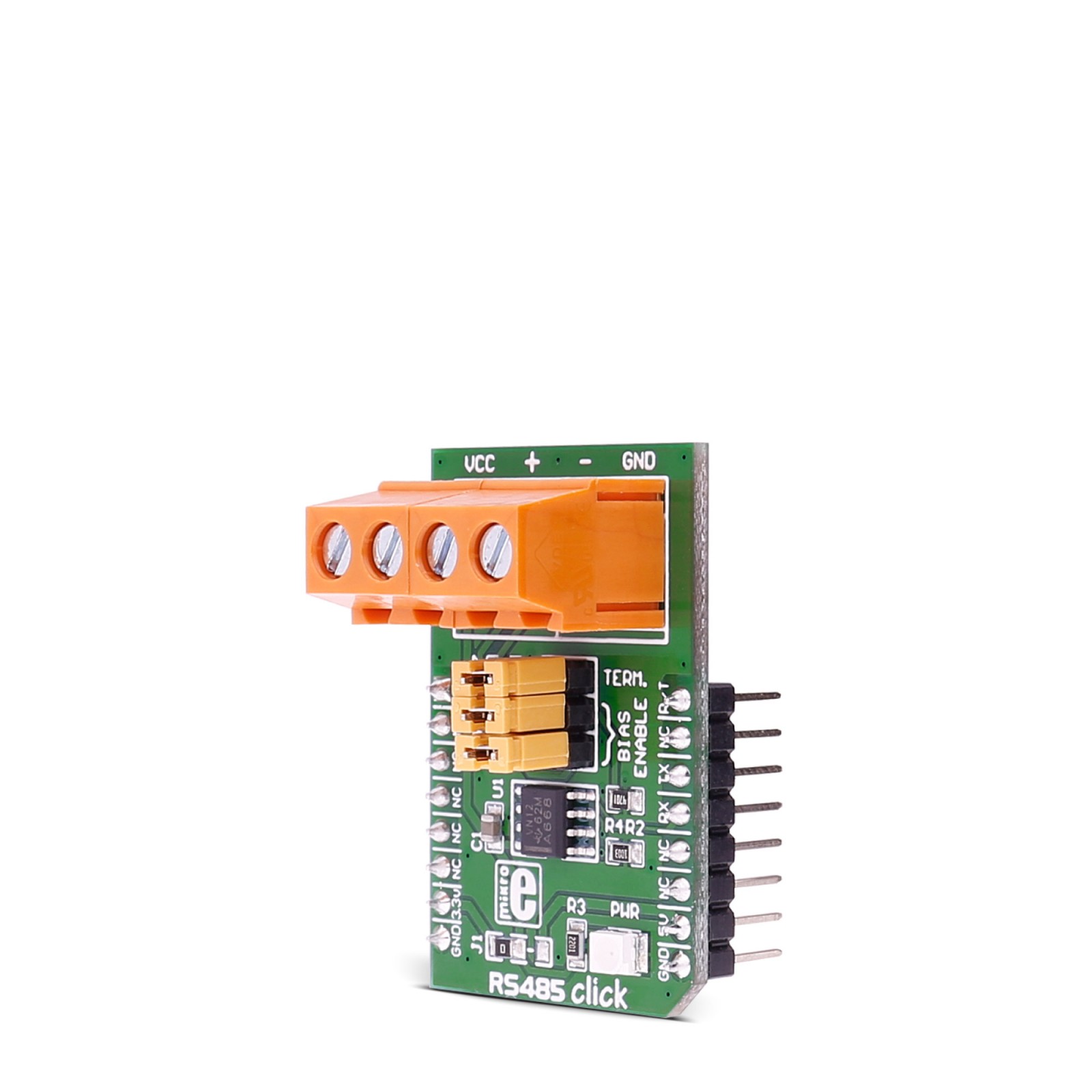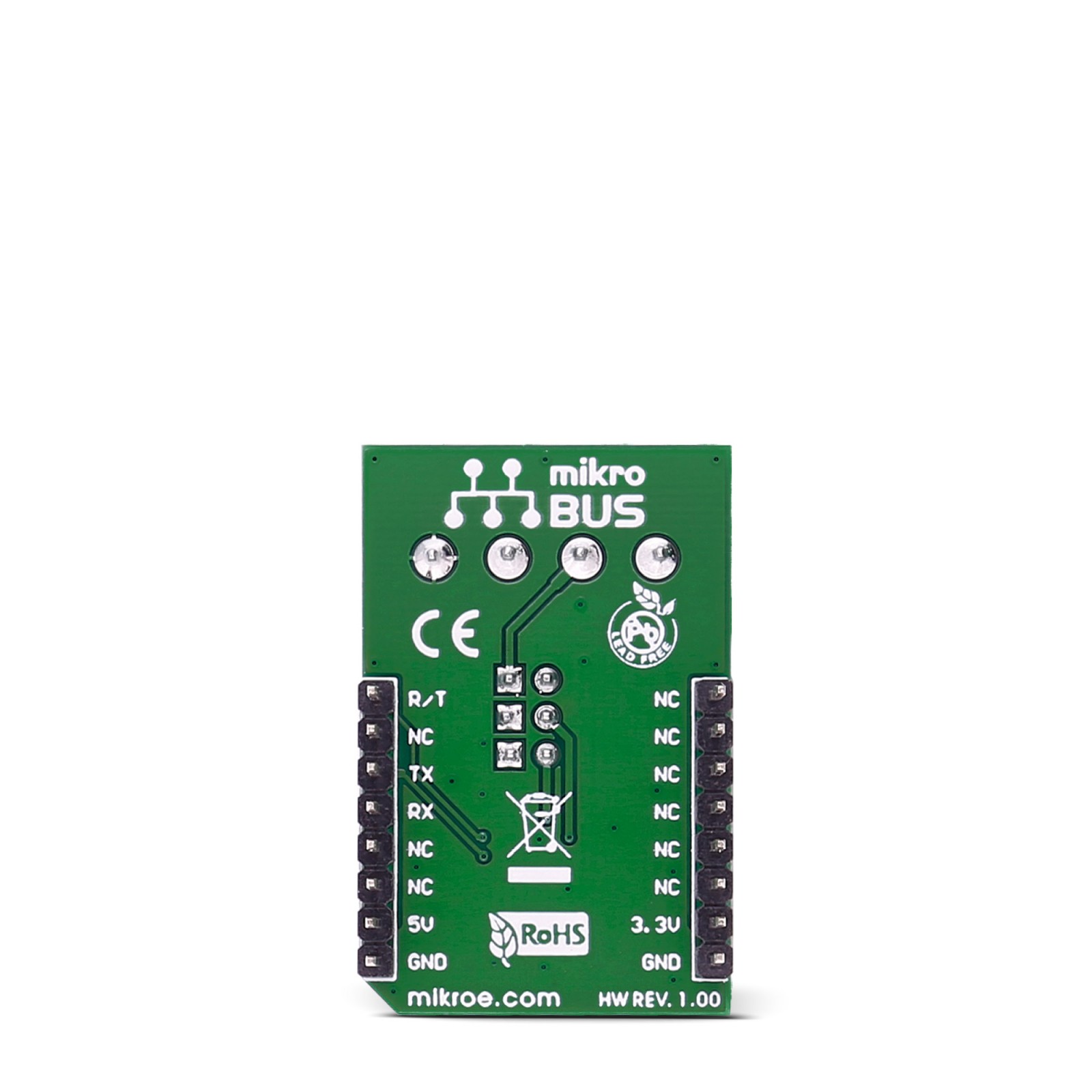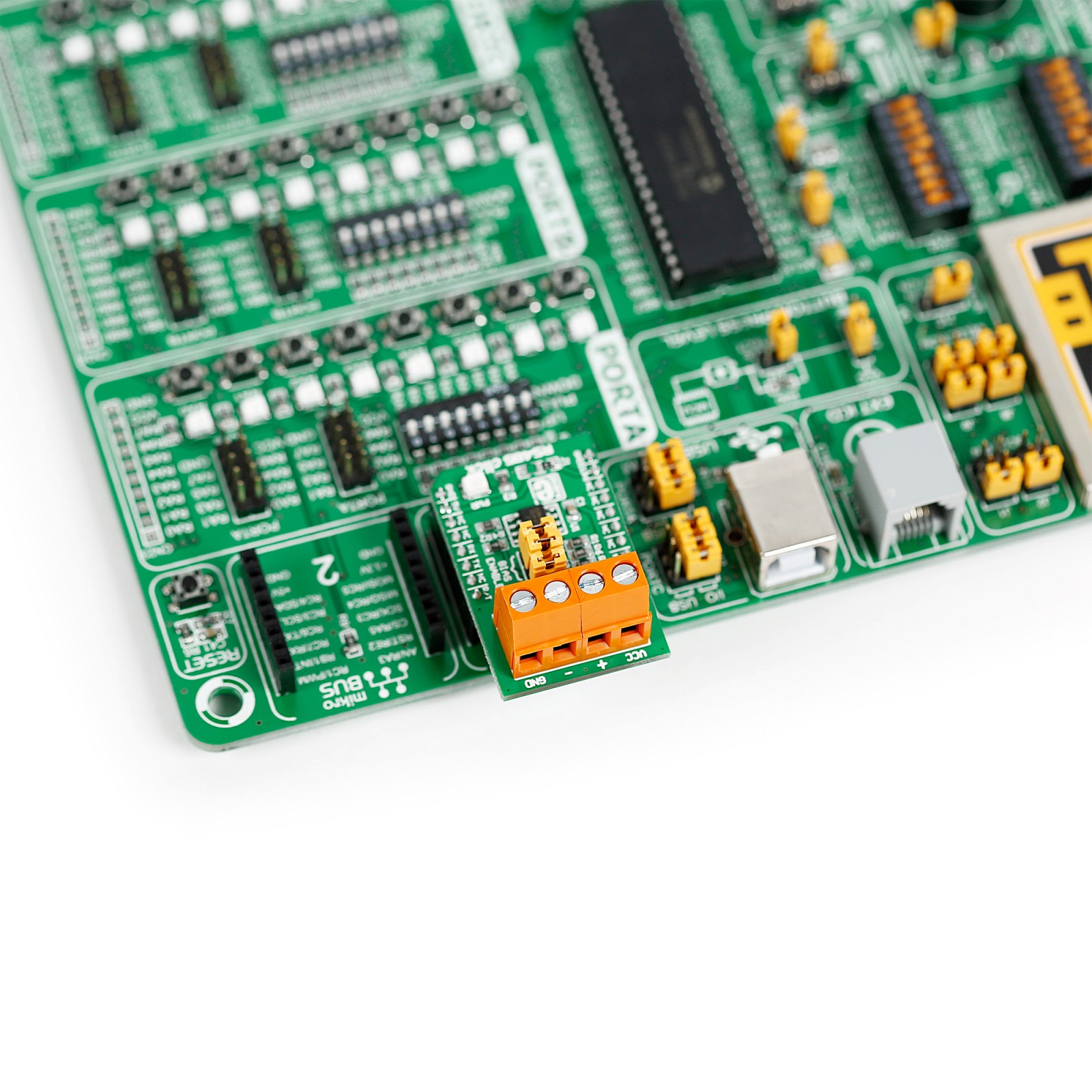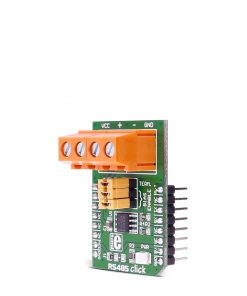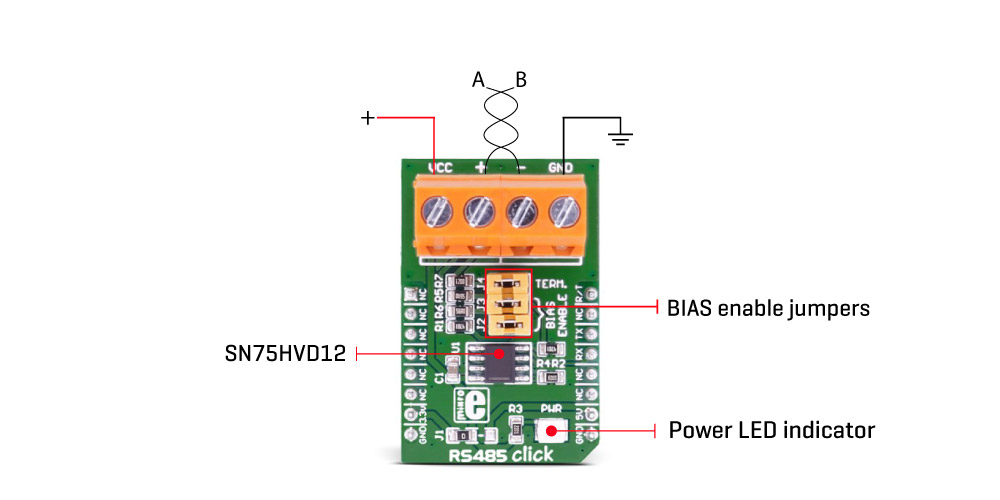RS485 Click 3.3V
R410.00 ex. VAT
RS485 Click 3.3V is a compact add-on board that can be used as an interface between the TTL level UART and the RS422/485 communication bus. This board features the SN75HVD12, an RS-485 transceiver from Texas Instruments. It has a half-duplex communication capability at three speeds (32, 10, and 1Mbps): bus Idle, open, short-circuit detection, thermal shutdown, and more. It is well suited for transmitting data packets over long distances and noisy areas using the twisted wire bus, which offers good electrostatic discharge (ESD) immunity. This Click board™ makes the perfect solution for the development of low-power RS-485 systems, digital motor control devices, utility meters, chassis-to-chassis interconnections, electronic security stations, and more.
RS485 Click 3.3V is supported by a mikroSDK compliant library, which includes functions that simplify software development. This Click board™ comes as a fully tested product, ready to be used on a system equipped with the mikroBUS™ socket.
Stock: Lead-time applicable.
| 5+ | R389.50 |
| 10+ | R369.00 |
| 15+ | R348.50 |
| 20+ | R335.38 |

